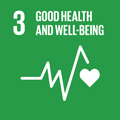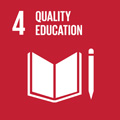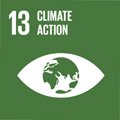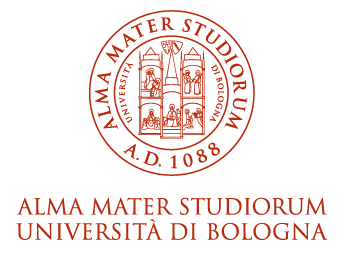- Docente: Alberto Credi
- Credits: 8
- SSD: CHIM/03
- Language: Italian
- Moduli: Alberto Credi (Modulo Mod 1) Massimo Baroncini (Modulo Mod 2)
- Teaching Mode: Traditional lectures (Modulo Mod 1) Traditional lectures (Modulo Mod 2)
- Campus: Bologna
- Corso: First cycle degree programme (L) in Agricultural Technology (cod. 8524)
Learning outcomes
The purpose of the course is to provide the basic knowledge on the structure of the matter as well as the thermodynamic and kinetic principles that regulate its transformation, in addition to acquire the basic knowledge of the relationships between structure, property and reactivity of organic molecules. Special attention will be given to the chemical reactions occurring in the agro-environmental biosphere.
Course contents
TEACHING UNIT 1: STRUCTURE (20 hours)
1.1 Chemical classification of matter
Homogeneous and heterogeneous systems, substances and mixtures, elements and compounds. Composition of atoms, atomic symbols, atomic number and mass number, isotopes, ions.
1.2 Atomic weight, chemical formulas, mole
Atomic mass and weight, empirical and molecular formula, molecular weight, mole.
1.3 Atomic structure
Wave-particle dualism and quantum-mechanical model of atom. Orbital shells and sub-shells, quantum numbers and their meaning, Hund rule and Pauli principle, electronic configurations. Atoms with many electrons; effective nuclear charge. Periodic properties: dimensions of atoms and ions, ionization energy, electron affinity and interpretation of their periodic behaviour.
1.4 The chemical bond
Covalent bond; Lewis structures, bond length and energy; electronegativity, partial and formal charge; shape of orbitals, molecular geometry, polarity. Valence bond theory, hybrid atomic orbitals, double and triple bond. Molecular orbitals theory. Ionic bond, ionic lattices. Metallic bond (brief mention). Oxidation numbers. Intermolecular forces: London forces, dipole-dipole interactions, hydrogen bonds.
1.5 Gases, liquids and solids
The states of matter. Properties of gases, ideal gas law, partial pressures; molecular kinetics theory; deviations from the ideal behaviour. The liquid state: vapor pressure, melting and boiling points. Brief mention to the solid state and the physical properties of solids. Allotropy and polymorphism. Allotropic forms of oxygen, carbon, sulfur and phosphorus. State diagrams and phase transitions.
TEACHING UNIT 2: TRANSFORMATIONS (30 hours)
2.1 Chemical equations, nomenclature and main categories of compounds
Chemical equations and their balancing; mass calculations, limiting reactant. Oxidation number; redox reactions and their balancing; oxidants and reductants. Nomenclature of main inorganic compounds. Oxides, hydrides, acids, bases, salts. Mass implications of chemical formulas.
2.2 Chemical thermodynamics
Heat and energy; first principle of thermodynamics, state functions, enthalpy of reaction, standard states, Hess law, enthalpy of formation. Spontaneous processes. Entropy and its significance. Second and third principles of thermodynamics. Gibbs free energy
2.3 Solutions
Concentration. Molarity and other means of reporting concentration in solution. Dilution. Behaviour of ideal solutions. Colligative properties, osmotic pressure. Solubility.
2.4 The chemical equilibrium
Equilibrium in the gas phase. Complete and incomplete reactions; expression of the equilibrium constant, reaction quotient, effect of temperature, Le Châtelier principle; calculation of the equilibrium constant. Relationship between free energy and equilibrium constant, temperature dependence of the equilibrium constant.
2.5 Equilibria in aqueous solution. Acids and bases
Properties of acids and bases, Brønsted-Lowry definition, acid-base conjugated pairs, amphoteric compounds; self-dissociation of water, pH, strength of acids and bases; pH calculations for strong and weak acids and bases, dissociation grade, polyprotic acids. Hydrolysis of alts and pH of their solutions. Buffer solutions and buffering ability. Acid-base titrations, indicators.
2.6 Solubility equilibria
Behaviour of poorly soluble salts. Solubility and solubility product. Common ion effect.
2.7 Electrochemistry
Galvanic cells, electrodes, standard potentials; electrochemical cells in non-standard conditions, Nernst equation. Glass electrode. Electrolysis. Fuel cells.
2.8 Chemical kinetics
Reaction rate, instantaneous rate, kinetic law and rate constant. Zero-, first- and second-order reactions; integrated form of first- and second-order kinetic laws. Reaction mechanism, relationship between kinetic law and reaction stoichiometry, order and molecularity. Activation energy, Arrhenius equation, collision theory. Homogeneous and heterogeneous catalysis.
TEACHING UNIT 3: PROPERTIES (20 hours)
3.1 Overview on the chemical properties of the principal elements
The periodic table and the periodic chemical characteristics; compounds of the elements with oxygen and hydrogen; brief mention to the properties of the main elements belonging to the s and p blocks (groups 1 through 3 and 14 through 18). The cycle of carbon, oxygen, nitrogen, sulfur and phosphorus.
3.2 Fundamentals of organic chemistry
Aliphatic hydrocarbons: alkanes, cycloalkanes, alkenes, alkynes; structure, nomenclature, conformations, geometrical isomerism. Chirality. Aromatic hydrocarbons: benzene and derivatives; heterocyclic compounds. Aliphatic and aromatic halides, alcohols, ethers, amines. Carbonyl derivatives: aldehydes, ketones, carboxylic acids, acylic halides, esters, amides. Macromolecules and polymers. Fatty acids, surfactants.
3.3 Class of molecules of biological relevance
Carbohydrates, lipids, aminoacids and proteins, nucleic acids.
TEACHING UNIT 4: SUPPORTING ACTIVITIES (10 hours)
4.1 Training on problems with numeric calculations
Chemical problems involving numeric calculations, such as balancing of chemical equations and stoichiometric problems, preparation of solutions, determination of pH, solubility problems, will be illustrated and solved in the classroom, in a stepwise fashion using the whiteboard. These activities are aimed at consolidating the knowledge acquired in the other teaching units, and at enabling the student to use such a knowledge in contexts of practical applications.
4.2 Demonstrations and experiments in the classroom
Computer simulations, animations and movies related to the topics explained in the other teaching units will be displayed. Moreover, the teacher will perform a few simple practical experiments compatible with a realization in the classroom; the operations and the results will be shown to the audience using suitable projection systems. The objective of these activities, besides the consolidation of the knowledge acquired in the other teaching units, is to stimulate the curiosity of the student and to increase the interest for the course and the motivation for learning.
Readings/Bibliography
The topics dealt with in this course, which are fundamental for a first-level university grade, can all be found in any university textbook of general chemistry. For example, see:
- A. M. Manotti Lanfredi, A. Tiripicchio, Fondamenti di Chimica, C.E.A, Milano, 2002
- I. Bertini, C. Luchinat, F. Mani, Chimica, C.E.A., Milano, 2004
- L. Moggi, M. Venturi, Chimica Generale ed Inorganica (2° ed.), Corso Ed., Ferrara, 2002
For the part on organic chemistry, see:
- T. W. Graham Solomons, Fondamenti di chimica organica, Zanichelli, Bologna, 1997
or any other university texbook on organic chemistry.
Further reading:
- M. Munowitz, Chimica, Zanichelli, Bologna, 2003
- J.C. Kotz, P.M. Treichel, J.R. Townsend, Chimica-IV Ed., Edises, Napoli, 2010
- P. Atkins, L. Jones, Chimica Generale, Zanichelli, Bologna, 1998
- J. McMurry, Chimica organica: un approccio biologico, Zanichelli, Bologna, 2008
Teaching methods
The course is composed mainly of classroom lectures, assisted by the projection of slides, animations and movies.
Problem solving activities and practical demonstrations of experiments are also carried out in the classroom.
Subjects of high impact (e.g., under an applicative point of view), related to the topics treated in the course, are presented if time is available.
In order to take advantage of the course and to facilitate the preparation for the exam, the regular attendance to classes is of utmost importance.Assessment methods
The learning assessment takes place with the final exam. The acquisition of the learning outcomes is ascertained by means of a written test to be undertaken without the support of notes, textbooks or any kind of electronic device (except a pocket calculator). A time of two hours is assigned for the test. At the exam, the student must possess the following items: ID with photo (identity card/passport or university badge with photo), pocket calculator, black or blue pen (not pencil).
The written test consists of:
- seven questions on theory, covering all the topics presented in the teaching units;
- three numerical problems, each related to a different topic among the following ones: atomic weight and mole, reaction stoichiometry, colligative properties, chemical equilibrium, acid-base solution equilibria, pH, hydrolysis, buffer solutions, acid-base titrations, solubility equilibria, chemical kinetics.
Each correct anwer to a theoretical question is given a score of 2; a score comprised between 0 and 6 is assigned to each problem. The mark of the written test is calculated as the sum of the scores obtained in each question and problem.
The maximum score of the test is 32, corresponding to 30 cum laude; a score of at least 18 in the written test is required to pass the exam.
The mark of the final test determines the grade of the exam; no partial tests during the progress of the course are performed.
The student can choose to undertake an oral exam to increase the grade gained in the written test.
The exam (both the written test and the oral exam) can be undertaken in english. Students who would like to take advantage of this possibility must send a written request (email) to the professor at least one week in advance.
Teaching tools
The slides used in the lectures are made available in the Internet as PDF files before the course begins. In order to profitably follow the lectures, students are invited to bring to class a printed copy of the slides.
The following items are also available in the course archive:
- Text of problems and exercises – some with solution – for training to the written test;
- The exam tests, with solutions and, assigned during a full academic year;
- A frequently asked questions file, wherein students can find all the practical information necessary to consciously follow the course and undertake the final exam.
Office hours
See the website of Alberto Credi
See the website of Massimo Baroncini
SDGs



This teaching activity contributes to the achievement of the Sustainable Development Goals of the UN 2030 Agenda.
